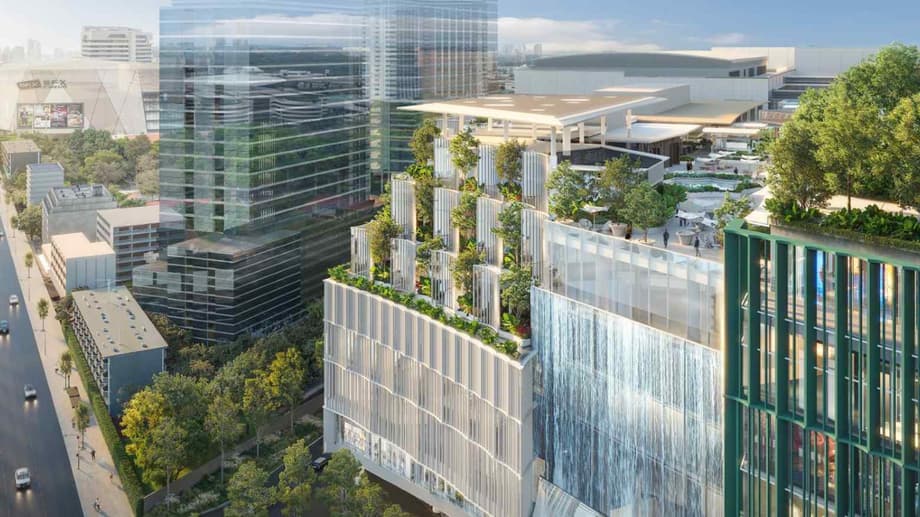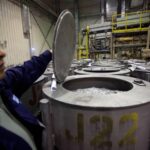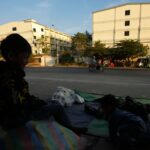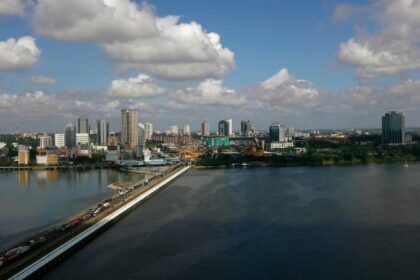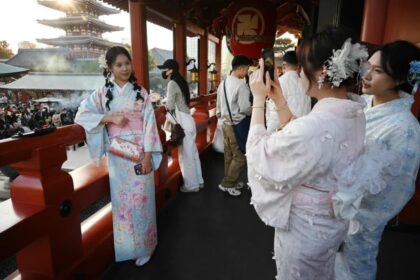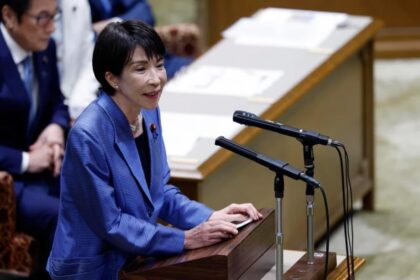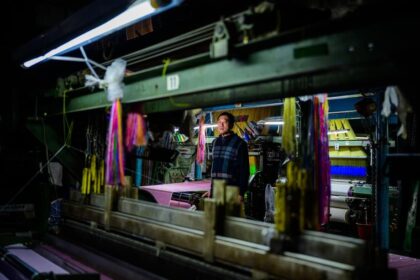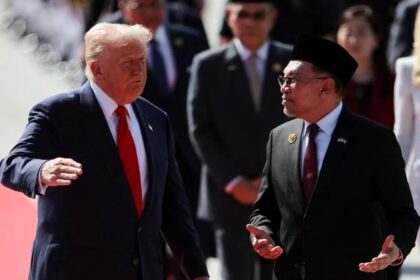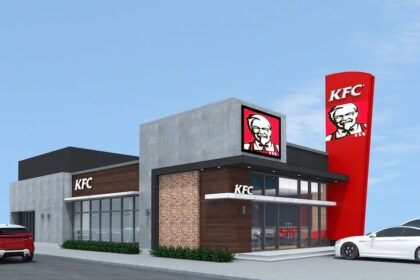A new retail anchor rises in northern Bangkok
Central Pattana is committing 21 billion baht (about 640 million dollars) to build a mega shopping mall in the fast growing northern corridor of Bangkok, betting on affluent residents and resurgent tourism to sustain a new destination. The site sits within a transport rich zone that links to an international airport and citywide rail, positioning the complex to capture both local footfall and travelers. The project continues the companys strategy of creating destination malls that serve as lifestyle hubs as well as retail centers.
- A new retail anchor rises in northern Bangkok
- What The Central aims to deliver
- Why the north matters for Bangkok retail
- Central Pattanas bigger play
- Lessons from past megamalls
- Airports and retail, what works
- Urban infrastructure and a mega project
- Voices from Central Pattana
- Risks and what to watch
- Key Points
The project, referred to by the company as The Central in planning documents, is planned for the Phahonyothin area. The land parcel covers about 49 rai, or roughly 78,400 square meters. Central Pattana plans the first phase as a full scale mall with an investment of about 20 billion baht. The target opening is in the fourth quarter of 2026, subject to permitting and construction milestones.
Executives want the complex to be a northern gateway for Bangkok retail, with a role similar to CentralWorld in the downtown core. Company materials describe a destination that can host flagship stores from global and Thai brands, a curated dining scene, family attractions and regular cultural programming. The full project area is planned at up to about 460,000 square meters of space when fully built out, with the mall as the anchor.
What The Central aims to deliver
At the heart of the plan is a destination mall designed for half day and full day visits. New generation malls in Thailand emphasize experience, convenience and a sense of occasion. That means a mix of luxury and accessible fashion, large format anchors, specialty streets within the mall, open plazas for events and a strong lineup of food and beverage.
Central Pattana positions its malls as community hubs as well as retail centers. In practice that often includes co working zones, family edutainment, wellness clinics, language schools, test centers and service counters. The aim is daily relevance for local residents alongside attractions for visitors.
Timeline and scale
The construction timeline points to a late 2026 debut for the first phase. Work on interior fit outs by anchor tenants usually starts several months before opening. The site at about 49 rai gives scope for later phases such as offices, a hotel or residences if the market supports them. Central Pattana often builds in phases so that future components can be timed to demand.
Target shoppers and tenant mix
The catchment spans the dense neighborhoods along Phahonyothin and Vibhavadi corridors, university communities around Kasetsart University and airport linked flows through Don Mueang. The tenant plan is expected to center on fashion flagships, lifestyle and sports clusters, premium supermarkets, a multiplex cinema and destination dining. The company wants a mix that raises the bar in the north of the city.
Why the north matters for Bangkok retail
Northern Bangkok combines mature districts with rapid new development. Multiple rail lines have improved connectivity over the past decade. The BTS Green Line serves the Phahonyothin corridor up to Khu Khot, and the State Railway of Thailand Red Line links central Bangkok to Don Mueang and Rangsit. Major expressways and arterial roads give the area strong east west and north south access. The result is a large basin of residents, students and office workers who already shop at established centers and will likely sample a new offer that brings more flagship brands and entertainment.
The area already features heavyweight malls such as Central Plaza Ladprao, Central Ramintra, Central Chaengwattana and Future Park Rangsit. A new landmark in Phahonyothin would give Central Pattana a chance to consolidate spending closer to the core northern neighborhoods while also tapping airport traffic. For travelers, a rail link or short drive to a comprehensive mall before or after flights is often appealing, particularly for families and regional visitors who build shopping into their itineraries.
Central Pattanas bigger play
The northern megamall sits inside a larger five year investment plan. Central Pattana has set aside about 120 billion baht for the 2025 to 2029 period for new projects and modernizations. The retail projects scheduled for 2025 include the Market Place Theprak community mall, Central Park and Central Park Offices and Central Krabi. By the end of the year the company expects to manage around 135 projects across business sectors, with a large share of future locations developed as mixed use destinations.
In 2026 the company plans to open three new projects: The Central in the Phahonyothin area of Bangkok, Central Northville in Nonthaburi and Central Khonkaen Campus in Khon Kaen. Central Northville is expected to be the largest mixed use development in Nonthaburi, on the former Central Rattanathibet site, with a planned retail component of roughly 210,000 square meters. The Khon Kaen campus is located near Khon Kaen University and Srinagarind Hospital with a planned retail area of about 67,000 square meters and an on site hotel. Renovations continue in parallel. Central Pinklao is slated to relaunch in the third quarter of 2025, Central Chaengwattana in the fourth quarter of 2025 and Central Bangna in the third quarter of 2026. The upgrade program targets affluent shoppers with stronger fashion, food and family segments.
The breadth of this pipeline signals confidence in Thailands consumer recovery and tourism rebound. It also reflects a view that the market still rewards destination formats that offer experiences and services which pure online channels cannot replicate. Central Pattana, as part of Central Group, can also draw on group wide brand relationships and loyalty programs to accelerate tenant signings and customer acquisition.
Lessons from past megamalls
Bangkok has seen a series of giant retail developments over the past two decades. Iconsiam, which opened in 2018 at a cost reported at around 1.6 billion dollars, set a new bar for size and spectacle. It proved that shoppers would travel across town for a mall that blends culture, riverfront views and global flagships. Large projects can succeed when they curate unique experiences, although they often require a long ramp to reach stable occupancy and sales productivity.
Scale comparisons can be confusing to shoppers because developers use different yardsticks. Gross floor area includes everything built, such as car parks and back of house. Gross leasable area focuses on the space that retailers occupy. For example, Central WestGate in Nonthaburi ranks among the largest malls in the country with a gross leasable area above 550,000 square meters in published lists, while Iconsiam is often cited around 525,000 square meters on the same basis. CentralWorld in the downtown core is materially smaller on a leasable basis, even though its total built area is vast. The Central in Phahonyothin will not need to be the largest on any measure to win customers if its mix and access are right.
Airports and retail, what works
Airport adjacency helps a mall, but it is rarely the only draw. Projects built near Suvarnabhumi during the pandemic years opened when international travel was muted. They learned to lean on local residents, day trippers and domestic tourists until borders reopened. A well calibrated outlet or mall can eventually capture late stage purchases and souvenirs from travelers, yet its base usually comes from nearby neighborhoods and office parks.
Don Mueang, the airport closest to the northern corridor, handles heavy domestic traffic along with regional routes. A new mall positioned within comfortable reach of rail and expressways can benefit from weekend families passing through, provincial visitors transiting by bus to the airport and city residents looking for an alternative to downtown crowds. Wayfinding, shuttle links to rail stations and fast drop off zones will matter as much as the tenant list for this location.
Urban infrastructure and a mega project
Bangkok authorities and utilities are under pressure to coordinate road work and maintenance. City councilors have criticized the handling of water pipe projects that leave streets potholed and dusty, with confusing signage and slow repair cycles. While the Metropolitan Waterworks Authority operates under a separate ministry, the city still controls road surfaces and permits for works, a split that often complicates schedules and traffic planning.
For a project the size of The Central, tight coordination with public agencies is crucial to keep access smooth during construction and after opening. Developers typically phase lane closures, put in clear pedestrian routes, schedule heavy deliveries at off peak times and arrange shuttle loops to nearby rail nodes. Good traffic engineering can make the difference between a well loved destination and a place locals avoid at rush hour.
Voices from Central Pattana
Central Pattanas leadership has often explained its destination strategy by pointing to performance at large malls it operates in Thailand and abroad. In a company statement in May 2024 marking the fifth anniversary of Central i City in Malaysia, President and Chief Executive Wallaya Chirathivat said:
“Central i-City, the first Thai shopping center abroad developed by Central Pattana, is another significant milestone that underscores our success and determination as Thailands leading real estate developer, growing at both regional and global levels. We are committed to leading our business partners to grow together, proudly bringing Thai identity to the international community.”
Another executive, Wuttikiat Techamongklapiwat, Head of Property Management and International Business, highlighted momentum at that mall as an example of how the group aims to keep traffic and sales expanding. He said:
“Our performance metrics speak volumes, a rebound in traffic of over 20 percent year on year, with tenant sales bouncing back strongly, especially in the first three months of 2024.”
These comments, while focused on Malaysia, reflect a consistent playbook. Central Pattana seeks to build places that mix retail with culture and leisure, and then drives activity through events, partnerships and a steady refresh of brands. The same approach is expected at the new northern Bangkok mall.
Risks and what to watch
Competition in Bangkok retail remains intense. The city features powerful clusters managed by rival groups and a wave of upgrades that keep raising the bar. Supply risk is real when several large projects open within a short window. The Central will compete with established venues in the north and with downtown flagships that continue to innovate. Central Pattana will need to lock in a strong list of anchor tenants, secure a pipeline of new to market brands and stage year round events that turn visits into habits.
Consumer health is another factor. Thai households carry high debt levels and discretionary spending can slow when borrowing costs rise. Tourist arrivals add vitality, although malls near airports still depend most on local patrons. A realistic ramp up plan, with occupancy targets that build quarter by quarter, helps control leasing risk. Success indicators to watch include retail occupancy, sales per square meter growth after the first year, consistent weekend footfall and evidence that the tenant mix draws across age groups.
Key Points
- Central Pattana will invest 21 billion baht, about 640 million dollars, to build a megamall in northern Bangkok.
- The project, called The Central in company plans, is in the Phahonyothin area on about 49 rai of land.
- The first phase is the shopping mall, with an investment of about 20 billion baht and a target opening in late 2026.
- Plans call for up to about 460,000 square meters of space across the full project when built out.
- The location is within reach of Don Mueang airport and multiple rail lines, aiming to draw both locals and travelers.
- The mall forms part of a five year plan of around 120 billion baht that includes projects in Bangkok, Nonthaburi and Khon Kaen, plus upgrades to existing malls.
- Bangkok retail competition is intense, so anchors, new to market brands and access management will be critical to performance.


